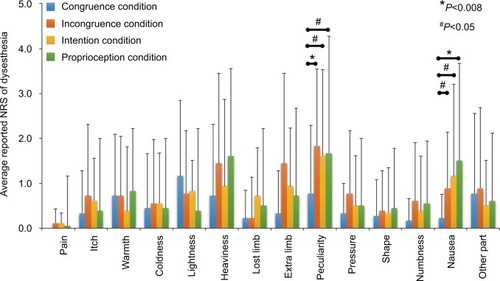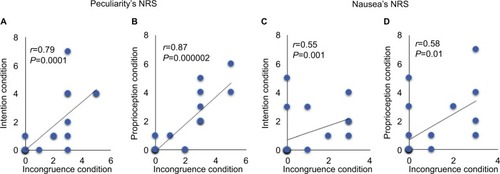Figures & data
Figure 1 Photographs of the experimental setup.

Figure 2 A bar chart showing the degree of dysesthesia detected under the four conditions.
Abbreviation: NRS, numeric rating scale.

Figure 3 Correlation analysis of NRS scores for peculiarity (A and B) and nausea (C and D) with each condition.
Abbreviation: NRS, numeric rating scale.

Figure 4 Topographic maps of ERD/ERS% of the high-frequency alpha rhythm band in the congruence (A), incongruence (B), intention (C), and proprioception (D) conditions.

Figure 5 Correlation analysis of NRS scores for peculiarity and ERD/ERS% in the P8 channel (right inferior parietal region [A]) under the incongruence condition and the TP8 and P10 channels (right temporoparietal region [B and C]) under the proprioception condition.
![Figure 5 Correlation analysis of NRS scores for peculiarity and ERD/ERS% in the P8 channel (right inferior parietal region [A]) under the incongruence condition and the TP8 and P10 channels (right temporoparietal region [B and C]) under the proprioception condition.](/cms/asset/a3d0b262-7b3f-4999-97b0-332c3c04a5fc/djpr_a_122564_f0005_c.jpg)
